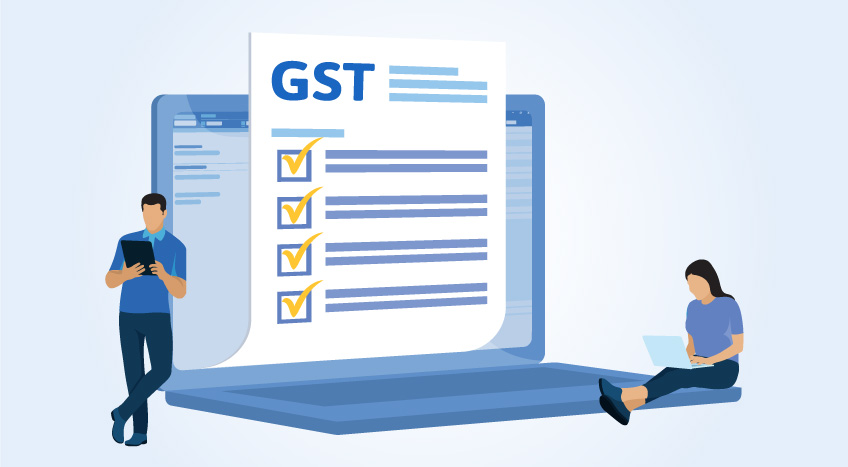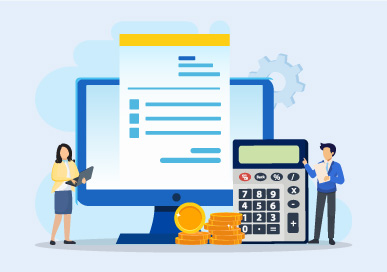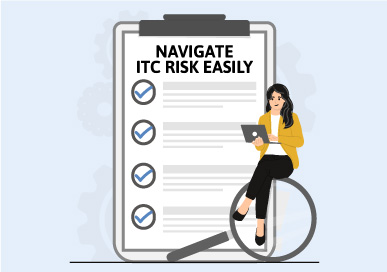GSTR-2A is an essential document in the Goods and Services Tax (GST) framework, serving as an auto-generated statement that reflects all purchases made by a business from its suppliers. Understanding this statement is crucial for businesses as it plays a significant role in claiming Input Tax Credit (ITC) and ensuring compliance with GST regulations. Regular reconciliation of this data with purchase records helps businesses avoid discrepancies and potential penalties.
What is GSTR 2A?
GSTR-2A is a system-generated document that shows the details of purchases/inward supplies of the buyer. This is an auto-generated statement that provides near-to-real time visibility of inward supplies as and when the supplier details the invoices in his GSTR-1. In also considers the GSTR-5 and GSTR-6 to auto-populate the inward supplies and input tax credit (ITC) details.
Form GSTR 2A is not a return. It is simply a read-only document that allows viewing all invoices uploaded by your suppliers. This is a dynamic report which gets updated as when the suppliers upload the invoices related to goods or services sold to you. It’s a critical statement that defines the amount of ITC you will be eligible to claim in your monthly or quarterly GSTR-3B return. Because, as buyer, you will be allowed to claim ITC only if it is reflected in the GSTR-2A/2B. So, GSTR-2B is an auto-generated statement like GSTR-2A; the only change is that it is generated monthly and remains static.
Note: As per the GST Council Meeting, filing of GSTR-2 and GSTR-3 is suspended.
Components of GSTR-2A
GSTR-2A is an auto-generated statement that provides details of inward supplies made by a taxpayer. It consists of several sections that categorize the information based on the nature of the supplies. Below is a detailed description of each part:
Section-wise Breakdown of GSTR-2A
|
Part |
Description |
|
Part A |
Supplies from Registered Taxpayers
|
|
Part B |
Supplies Under Reverse Charge |
|
Part C |
Debit/Credit Notes |
|
Part D |
ISD (Input Service Distributor) Details |
Difference Between GSTR-2A and GSTR-2B
While both GSTR-2A and GSTR-2B serve to provide information on inward supplies, they have distinct characteristics:
|
Feature |
GSTR-2A |
GSTR-2B |
|
Nature |
Dynamic, auto-updated in real-time as suppliers file their GSTR-1 returns. |
Static, generated on a specific date (12th of every month) based on supplier filings before that date. |
|
Data Source |
Includes data from GSTR-1, GSTR-5, GSTR-6, GSTR-7, and GSTR-8. |
Primarily includes data from GSTR-1 and GSTR-5; does not include TDS/TCS deductions. |
|
Purpose |
Provides a comprehensive view of all purchases for reconciliation purposes. |
Useful for ITC reconciliation as per Rule 36(4) and helps identify compliant/non-compliant vendors. |
|
Update Frequency |
Updates in real-time as invoices are filed by suppliers. |
Does not update dynamically; reflects data as of the cut-off date (12th). |
How it is Auto-Populated
GSTR-2A is automatically populated with details from the GSTR-1 filed by suppliers. As suppliers submit their sales data, it is reflected in the buyer's records. This auto-population allows businesses to cross-check invoices against their records, ensuring accuracy in ITC claims.
How to download GSTR-2A in TallyPrime
Why GSTR-2A is important for GST filing?
| TallyPrime's latest release now supports seamless GSTR-2A and GSTR-2B reconciliation |
Coming Soon - TallyPrime New Release
The upcoming TallyPrime New Release introduces a connected banking experience, enabling businesses to handle a wide range of GST activities directly within TallyPrime. From uploading invoices to filing returns and reconciling data, this new release streamlines the entire process. Here's a quick preview of the features you can expect from the new TallyPrime release:
- Auto Download GST Data: Automatically download GSTR-2A/2B, GSTR-1, and GSTR-3B data for seamless reconciliation.
- Connected Services for GST Invoices and Returns: Upload GST invoices and returns effortlessly via connected services.
- Direct Filing and Signing of GSTR-1: File and sign the GSTR-1 return directly from TallyPrime, simplifying compliance.
- Enhanced Outstanding Reports: Gain insights on ITC at-risk with improved outstanding reports.
- GSTN Integration: Fetch, validate, and create ledgers using GSTN, ensuring accuracy and compliance.
- Stripe-View in Reports: Analyze reports more easily with the new Stripe-View feature in all reports.
- Connected Banking: Stay connected to your business banking—track, record, reconcile, and collect payments seamlessly within TallyPrime, all without switching platforms.
- Samrt bank Reconciliation: One-click auto bank reconciliation with smart suggestions and assistance to help you match unreconciled transactions, available across leading banks.
- Invoice Management System (IMS): TallyPrime’s connected IMS solution enables you to seamlessly download, reconcile, and take actions—Accept, Reject, or Pending—directly within TallyPrime, keeping your books and IMS dashboard in sync.
- And Much More
Frequently Asked Questions
1. What are GST returns 2A and 2B?
GSTR 2A is a real-time, auto-generated report that shows all purchases made by a taxpayer based on data filed by suppliers. It's dynamic and changes as suppliers update their returns.
On the other hand, GSTR 2B is a static statement generated monthly. It provides a fixed summary of eligible and ineligible input tax credits (ITC).
Both GSTR 2A and 2B are essential for GST reconciliation. They help businesses ensure accurate tax filing and claim valid ITC without discrepancies.
2. Is Gstr 2A removed?
No, GSTR 2A is not removed; it continues to be available on the GST portal. However, the creation of GSTR 2B as a static, ITC-focused announcement affords a greater complete view for input tax credit reconciliation. Businesses are encouraged to apply both GSTR 2A and GSTR 2B for accurate GST 2A reconciliation and compliance.
3. What Happens If GSTR-1 Is Delayed or Not Uploaded by Suppliers?
Failure or delay in uploading supplier invoices has direct implications:
4. Delayed ITC Availability for the Buyer:
Buyers cannot claim Input Tax Credit if the supplier does not upload the invoice details in GSTR-1 on time.
This may result in cash flow issues, as buyers must pay GST in cash until ITC is reconciled.
Reconciliation Errors:
Invoices missing from GSTR-2A create reconciliation mismatches, causing additional efforts in contacting suppliers and making adjustments.
Compliance Issues:
Suppliers failing to upload invoices may face notices or penalties from the GST authorities.
Persistent non-compliance by suppliers can affect their reputation and business relationships with buyers.
ITC Reversal Risk:
If discrepancies are not resolved promptly, the ITC claimed by the buyer may be reversed by the tax authorities, leading to penalties and interest charges.
Watch Video on How to Reconcile GSTR-2 in TallyPrime
Read More on GST Returns
GST Returns, Types of GST Returns, New GST Returns & Forms, Sahaj GST Returns, Sugam GST Returns, GSTR 1, GSTR 3B, GSTR 4, GSTR 5, GSTR 5A, GSTR 6, GSTR 7, GSTR 8, GSTR 9, GSTR 10, GSTR 11
GST
GST Software, GST Calculator, GST on Freight, GST on Ecommerce, GST Impact on TCS, GST Impact on TDS, GST Exempted Goods & Services, Reverse Charge Mechanism in GST, GST Declaration, GST Compliance, GST Record Keeping
Types of GST
CGST, SGST, IGST, UTGST, Difference between CGST, SGST & IGST
GST Rates & Charges
GST Rates, GST Rate Finder, GST Rate on Labour Charges, HSN Codes, SAC Codes, GST State Codes











